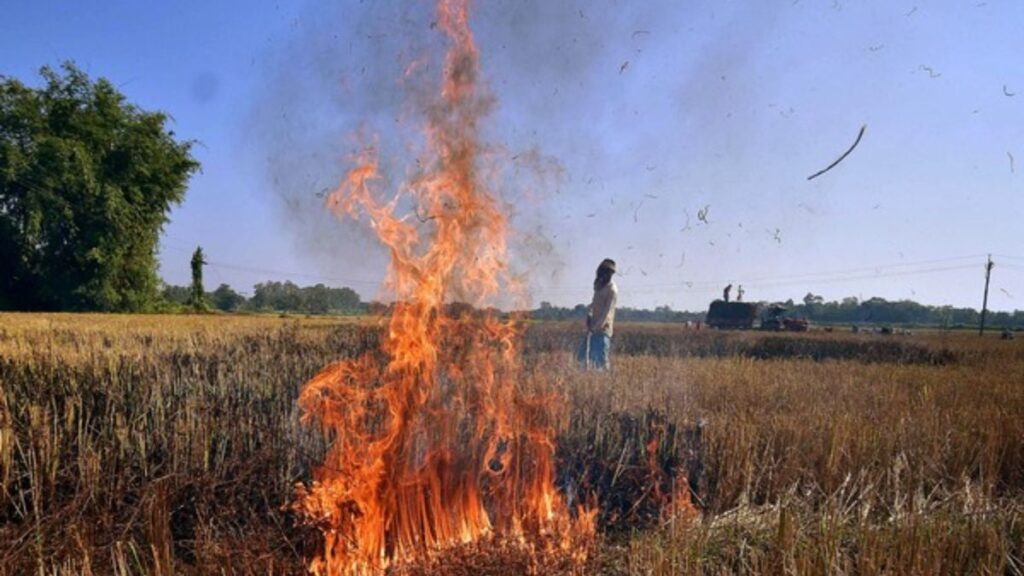
In a recent development, the Haryana government has informed the Commission for Air Quality Management (CAQM) in the National Capital Region (NCR) about its proactive steps to reduce stubble burning cases in the state. Despite these efforts, the air quality index (AQI) in seven NCR cities within Haryana has taken a hit, registering as “severe.”
During a virtual review meeting led by CAQM chairperson MM Kutty, with the participation of deputy commissioners (DCs), Chief Secretary Kaushal highlighted the state’s commitment to curbing the harmful practice of stubble burning. He reported that until the end of October, a total of 939 challans were issued to violators, resulting in fines exceeding ₹25 lakh. These punitive measures are aimed at dissuading farmers from burning crop residue after harvest.
Ironically, on the same day, the AQI in seven NCR cities of Haryana reached severe levels, indicating the urgent need for further improvements in air quality. Despite this challenge, Chief Secretary Kaushal shared that Haryana had achieved a commendable 38% reduction in stubble burning cases when compared to the previous year.
In recognition of these efforts, CAQM chairperson Kutty praised the DCs of Karnal and Kaithal for their outstanding achievement of reducing farm fires by over 60% compared to the previous year. He also emphasized the importance of continued vigilance during the upcoming festival season to further enhance air quality in the region.
The Haryana government reiterated its dedication to eliminating unsustainable practices like stubble burning, citing the “Haryana Ex-situ Management of Paddy Straw-2023” scheme issued on October 30. This scheme aims to ensure an adequate supply of paddy straw to biomass-based projects, thereby reducing the incentive for stubble burning.
To ensure strict monitoring of farm fires, the government has established district/block-level enforcement teams, flying squads, village and block-level nodal officers, and suspended officials found erring. Additionally, the state is exploring industrial utilization of paddy straw by identifying clusters of villages that produce biomass near various industries, with a projected utilization of about 14 lakh metric tons of paddy straw for the current year.
Chairman of Haryana Pollution Control Board, Raghavendra Rao, directed DCs to monitor mining and excavation activities and ensure that waste is not burned in the open. He emphasized the importance of maintaining clean roads and implementing government-enforced measures.
The meeting was attended by key officials, including Additional Chief Secretary (ACS, Environment, Forest, and Wildlife) Vineet Garg, ACS (Public Health Engineering) AK Singh, Director (Agriculture) Narhari Singh Banger, and other senior officers.
However, despite these efforts, the AQI in several Haryana cities remains a cause for concern. According to the Central Pollution Control Board (CPCB), cities like Bahadurgarh, Faridabad, Fatehabad, Hisar, Jind, Rohtak, and Sonepat reported “severe” AQI levels. Several other cities registered “very poor” air quality, emphasizing the need for continued measures to combat stubble burning.
In the latest statistics provided by the state agriculture department, Haryana recorded 28 farm fire cases in a single day, bringing the total for the season to 1,372. The majority of these cases were reported in Fatehabad, Kaithal, Jind, Ambala, and Kurukshetra, while some areas like Charkhi Dadri, Gurugram, Mahendergarh, Nuh, and Rewari have not recorded any stubble burning cases to date. Panchkula had a single reported case.
Despite the challenges, the Haryana government’s efforts to combat stubble burning and improve air quality in the NCR continue, with a strong commitment to sustainable practices and environmental well-being.
Sources By Agencies



